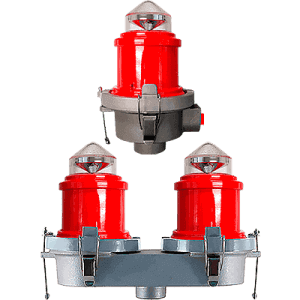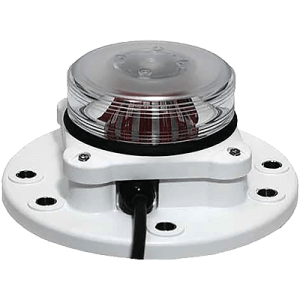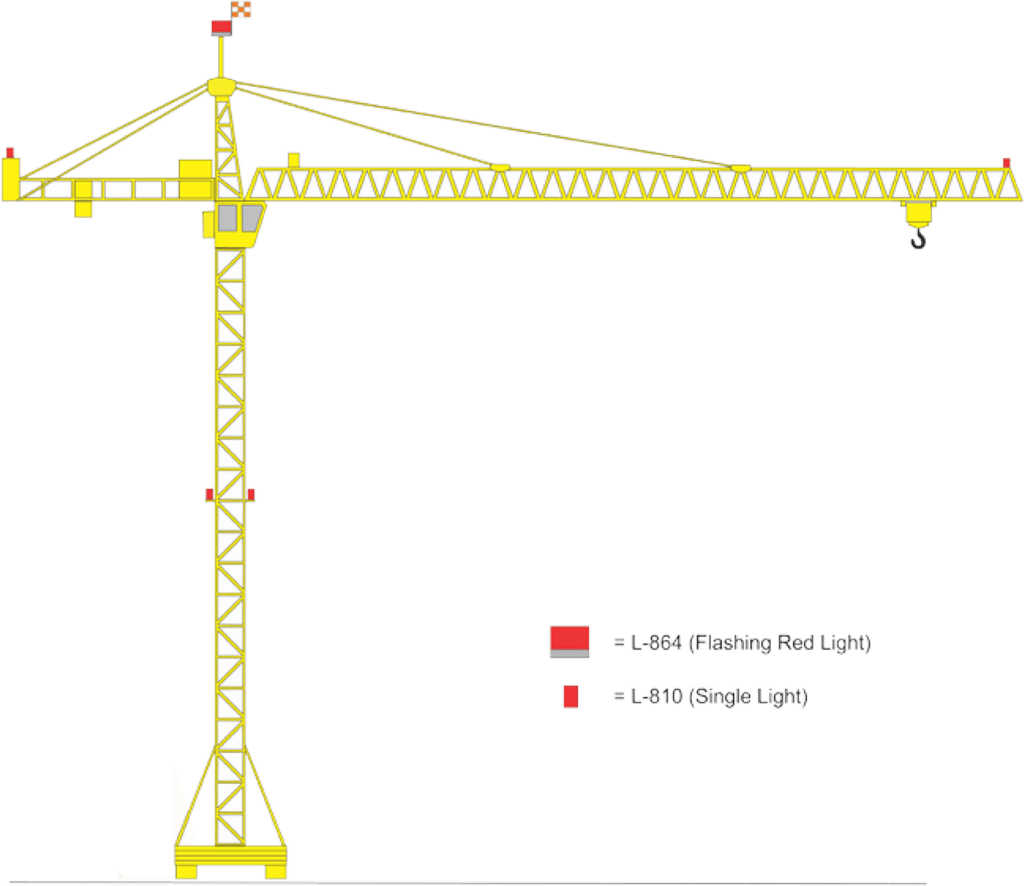

Tower Crane Obstruction Lights
Tower cranes are used to lift heavy building materials such as steel and concrete at major construction projects. A typical tower crane has a maximum unsupported height of 265 feet (81 meters), but it can be taller when attached to a building. In order to prevent air traffic accidents, lights are added to tower cranes to create a general outline of the structure so it’s visible to pilots at night and in limited visibility conditions.
According to the FAA’s regulations, a flashing L-864 medium intensity red obstruction light should be mounted at the crane’s highest point, and additional steady-burning L-810 low intensity red obstruction lights should be placed at the ends of the crane boom and at various locations to further clarify the outline of the structure. In cases of more extensive structures, intermediate level lighting (L- 810) may be required. For cranes with angular booms, lights must be mounted on a pivot axis, so they remain level when the boom tilts and are not obscured by the crane structure. Floodlights may be used in addition to standard lighting as long as they don’t interfere with the visibility of the obstruction lights.

These general guidelines should not be considered all-inclusive. Each tower crane should be individually evaluated to determine the specific lighting requirements for that structure. Before purchasing tower crane aircraft warning lights, be sure to review the FAA’s tower crane obstruction light regulations. FAA and ICAO guidance is necessary for the proper selection and correct placement of aircraft warning lights and obstruction lighting equipment.
Click to see all our obstruction light options for tower cranes: Low Intensity, Medium Intensity, Solar Off-Grid.
